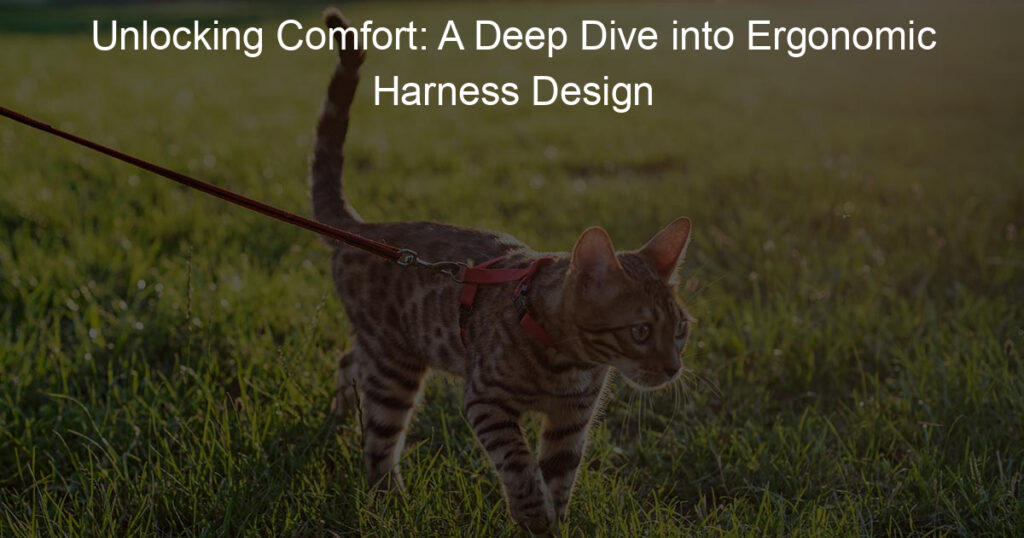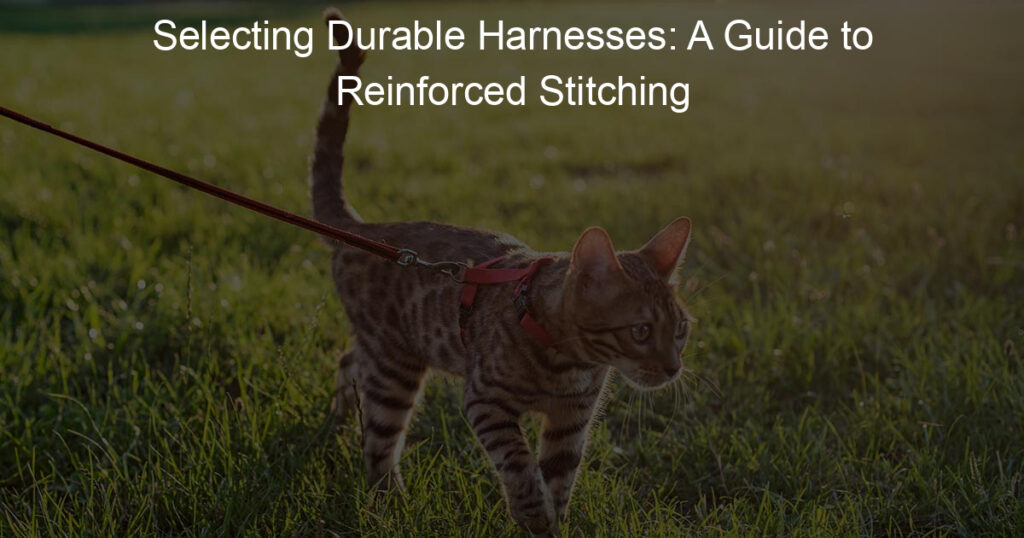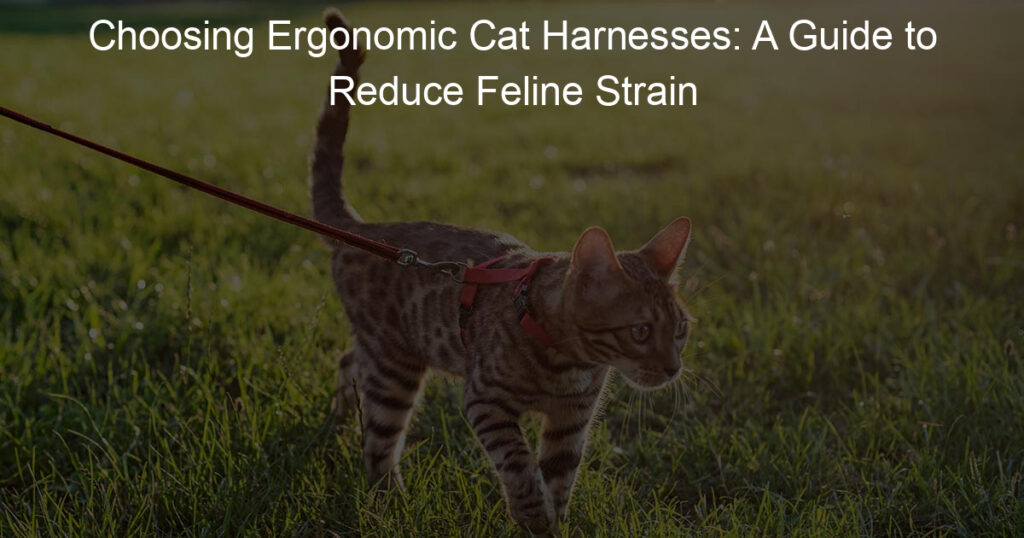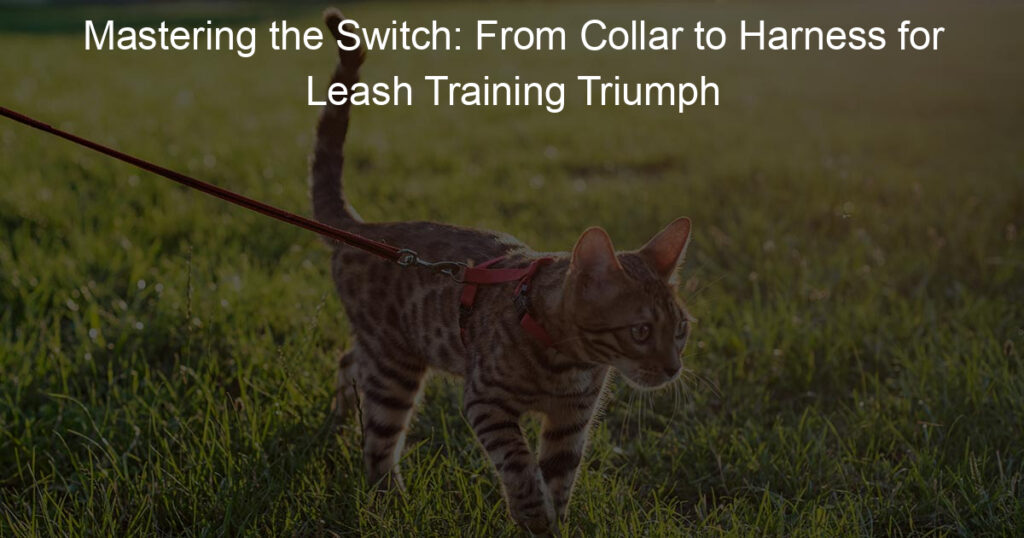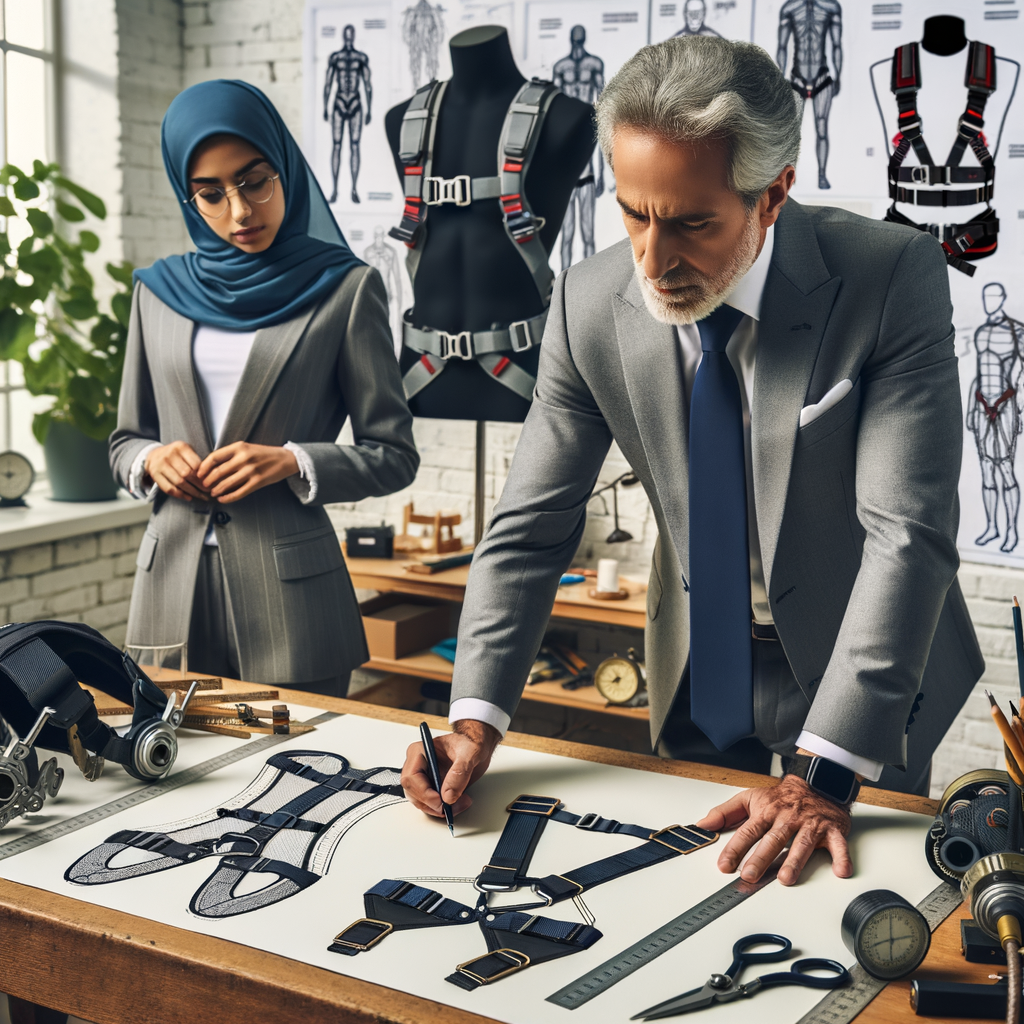
Introduction to Ergonomic Harness Design
When it comes to safety and comfort, the design of a harness plays a crucial role. This is where the concept of Ergonomic Harness Design comes into play. But what exactly is it, and why is it so important? Let’s dive into the details.
- Understanding the Importance of Ergonomic Harness Design
- Exploring the Evolution of Harness Design
Ergonomic Harness Design is all about creating a harness that fits well, is comfortable, and most importantly, safe. The idea is to design a harness that reduces the risk of injury, increases productivity, and enhances comfort. This is achieved by considering the user’s body shape, size, and movements while designing the harness.
For instance, an ergonomic harness distributes weight evenly across the body, reducing strain on any one part. This can significantly reduce the risk of back injuries, which are common among workers who frequently use harnesses. Moreover, a well-designed ergonomic harness can also improve the user’s mobility, making it easier for them to perform their tasks.
The design of harnesses has evolved significantly over the years. In the past, harnesses were simple devices made of rope or leather, designed with the sole purpose of keeping the user secure. Comfort was rarely a consideration, and the fit was often poor.
However, as our understanding of ergonomics improved, so did the design of harnesses. Today, harnesses are made from a variety of materials, including nylon and polyester, which are both durable and comfortable. They are also designed to fit the user’s body perfectly, with adjustable straps and padding in key areas.
Furthermore, modern harnesses also include features like quick-release buckles and tool holders, making them more user-friendly. The evolution of harness design is a testament to our growing understanding of ergonomics and its importance in ensuring safety and comfort.
In conclusion, Ergonomic Harness Design is a critical aspect of safety equipment design. It ensures that harnesses are not only safe but also comfortable and easy to use. As we continue to learn more about ergonomics, we can expect to see even more improvements in harness design in the future.
Optimal Fit Harnesses: The Key to Comfort
When it comes to harnesses, achieving an optimal fit is crucial. It not only ensures comfort but also enhances safety and performance. But what exactly is an optimal fit? Let’s dive in and explore.
Defining Optimal Fit
An optimal fit refers to a harness that fits snugly, yet comfortably, allowing for unrestricted movement while providing the necessary support. It’s about finding the perfect balance between comfort and safety.
- How to measure for an optimal fit
- Common mistakes in harness fitting
Measuring for an optimal fit involves a few simple steps. First, measure the chest at its widest point, usually right behind the armpits. Then, measure the waist, just above the hips. Lastly, measure the length from the base of the neck to the base of the tail. These measurements will help you choose the right size harness.
There are a few common mistakes people make when fitting a harness. One is choosing a harness that is too large or too small. A harness that is too large can slip off, while a harness that is too small can cause discomfort and restrict movement. Another common mistake is not adjusting the harness properly. The harness should be snug but not tight. If you can fit two fingers between the harness and the body, you have a good fit.
Remember, an optimal fit harness is not just about comfort. It’s about safety and performance too. So, take the time to measure correctly and avoid common fitting mistakes. Your comfort and safety depend on it.
Benefits of Optimal Fit Harnesses
When it comes to harnesses, achieving an optimal fit is not just about comfort. It’s about enhancing safety and performance as well. Let’s delve into the benefits of harnesses that fit just right.
- Increased comfort and reduced strain:
- Improved safety and performance:
A well-fitted harness can significantly increase the comfort level of the user. It distributes the weight evenly across the body, reducing the strain on any particular area. Imagine carrying a heavy backpack. If the straps are too tight or too loose, it can cause discomfort and strain on your shoulders. But when adjusted correctly, the weight feels manageable, and you can carry it for longer periods without feeling the strain. The same principle applies to harnesses.
A harness that fits correctly is a crucial safety tool. It ensures that the user is securely attached and reduces the risk of accidents. For instance, in industries like construction or climbing, a well-fitted harness can be the difference between life and death. Furthermore, a comfortable harness allows the user to perform tasks more efficiently. It doesn’t hinder movement and allows for greater flexibility and mobility, thereby improving overall performance.
In conclusion, an optimal fit harness is not just a comfort accessory. It’s a tool that enhances safety and boosts performance. So, it’s essential to invest time in finding a harness that fits just right and meets your specific needs.
Exploring Harness Ergonomics: A Closer Look
When it comes to harness design, ergonomics plays a vital role. It’s not just about making the harness fit well, but also about ensuring comfort and ease of use. Let’s delve into the key elements of ergonomic design in harnesses.
Key Elements of Ergonomic Design in Harnesses
There are several factors that contribute to the ergonomic design of a harness. Here, we will explore three main elements:
- Material selection and its impact on comfort
- The role of padding and its placement
- Adjustability and its importance in ergonomic design
Choosing the right material is crucial for the comfort of the harness user. Materials that are soft, breathable, and durable are often preferred. For instance, nylon and polyester are commonly used due to their strength and resistance to wear and tear. The material should also be able to distribute weight evenly to prevent discomfort or strain.
Padding plays a significant role in enhancing comfort. It helps to cushion the body and prevent discomfort from prolonged use of the harness. The placement of padding is equally important. It should be strategically located at points where the harness contacts the body, such as the shoulders, back, and waist. This helps to distribute pressure evenly and reduce strain.
A well-designed harness should be easily adjustable to fit different body sizes and shapes. This allows for a more personalized fit, enhancing comfort and safety. Harnesses with adjustable straps and buckles provide the user with the flexibility to adjust the fit as needed. This is particularly important in work situations where the harness is worn for extended periods.
In conclusion, the material selection, padding, and adjustability are key elements in the ergonomic design of harnesses. By paying attention to these elements, manufacturers can create harnesses that not only fit well but also provide comfort and ease of use.
Case Study: Harness Ergonomics in Action
Let’s dive into a real-world example to understand how ergonomic harness design can make a significant difference. We will be exploring a case study that perfectly illustrates the importance of harness ergonomics.
- Exploring a real-world example of ergonomic harness design
Consider the case of a construction company that was facing issues with their workers’ safety harnesses. The workers complained about discomfort and restricted movement, which was affecting their productivity. The company decided to switch to ergonomic harnesses, focusing on aspects like material selection, padding placement, and adjustability.
The new ergonomic harnesses were made of lightweight, breathable materials that reduced the strain on the workers’ bodies. The padding was strategically placed at the shoulders, back, and waist, providing comfort and support. The harnesses were also adjustable, allowing each worker to achieve a perfect fit.
The results were remarkable. The workers reported feeling more comfortable and less fatigued, which led to an increase in productivity. The number of work-related injuries also decreased significantly.
- Key takeaways from the case study
| Before Ergonomic Harnesses | After Ergonomic Harnesses |
|---|---|
| Workers complained of discomfort and restricted movement | Workers reported increased comfort and freedom of movement |
| Low productivity due to discomfort and fatigue | Increased productivity as workers felt less fatigued |
| High number of work-related injuries | Significant reduction in work-related injuries |
This case study highlights the importance of ergonomic design in harnesses. By focusing on comfort and adjustability, companies can ensure the safety and productivity of their workers. The key takeaway is that ergonomic design is not just about comfort, but also about improving performance and reducing the risk of injuries.
Harness Design for Comfort: Best Practices
When it comes to harness design, comfort is a crucial factor. A well-designed harness can significantly enhance user experience, while a poorly designed one can lead to discomfort and even injury. In this section, we will delve into the best practices for harness design for comfort.
Best Ergonomic Harnesses: A Comparative Analysis
Let’s take a closer look at some of the top-rated ergonomic harnesses on the market and understand what makes them stand out.
- Reviewing top-rated ergonomic harnesses
- Understanding what makes them stand out
There are several top-rated ergonomic harnesses available in the market. These harnesses have been praised for their comfort, fit, and design. Some of the most popular ones include the ErgoFit Harness, the ComfortMax Harness, and the UltraEase Harness. Each of these harnesses has unique features that contribute to their high ratings.
What sets these top-rated ergonomic harnesses apart is their focus on user comfort. They are designed with features such as adjustable straps, padded shoulders, and breathable materials to ensure maximum comfort. Additionally, they also incorporate the latest technology and design principles to ensure an optimal fit and ease of use.
Let’s take a closer look at each of these harnesses and what makes them stand out.
| Harness | Key Features | User Feedback |
|---|---|---|
| ErgoFit Harness | Adjustable straps, padded shoulders, breathable material | Highly rated for comfort and fit |
| ComfortMax Harness | Adjustable straps, padded waist belt, quick-release buckles | Highly rated for comfort and ease of use |
| UltraEase Harness | Adjustable straps, padded shoulders and waist, breathable material | Highly rated for comfort and durability |
In conclusion, when designing a harness for comfort, it is essential to consider factors such as adjustability, padding, and breathability. By looking at the best practices of top-rated ergonomic harnesses, we can gain valuable insights into how to design a comfortable and user-friendly harness.
Designing for Comfort: Key Considerations
When it comes to designing a harness for comfort, there are several key considerations that designers must keep in mind. Two of the most important factors are the importance of user feedback and the necessity for continual improvements and innovations. Let’s delve into these aspects.
- Importance of User Feedback in Design
- Continual Improvements and Innovations in Harness Design
User feedback is an invaluable resource in the design process. It provides real-world insights into how the harness is used, its comfort level, and any potential issues that may arise. By listening to the users, designers can make adjustments and improvements that directly address the needs and comfort of the users.
For instance, if users report discomfort in certain areas, designers can look into padding or adjusting the harness in those specific areas. This user-centric approach ensures that the harness is not only comfortable but also functional and efficient.
The field of harness design is constantly evolving, with new technologies and materials being introduced regularly. Designers must stay abreast of these developments and incorporate them into their designs to ensure the highest level of comfort.
For example, the use of lightweight, breathable materials can significantly increase the comfort of a harness. Similarly, innovations such as adjustable straps and quick-release buckles can enhance the usability and comfort of the harness.
In conclusion, designing a comfortable harness requires a deep understanding of user needs and a commitment to continual improvement and innovation. By focusing on these key considerations, designers can create harnesses that provide maximum comfort and functionality.
Harness Fit and Design: Achieving the Perfect Balance
When it comes to harnesses, achieving the perfect balance between fit and design is crucial. The right fit ensures comfort and safety, while an ergonomic design enhances the user’s experience. Let’s delve into this topic from a user’s perspective.
Ergonomic Design in Harnesses: A User’s Perspective
Ergonomic design in harnesses is all about creating a product that fits the user’s body perfectly, allowing for maximum comfort and efficiency. But what do users have to say about this? Let’s explore.
- User testimonials on the impact of ergonomic design
- How ergonomic design enhances user experience
Many users have shared their experiences with ergonomic harnesses, and the feedback is overwhelmingly positive. For instance, John, a professional climber, says, “The ergonomic design of my harness has made a world of difference. It fits me perfectly and I can move freely without any discomfort.”
Similarly, Sarah, a construction worker, shares, “I wear my harness for long hours every day. Thanks to its ergonomic design, I don’t feel any strain on my back or shoulders. It’s like a second skin.”
Ergonomic design in harnesses enhances user experience in several ways. First, it ensures a perfect fit, which means the harness is neither too tight nor too loose. This reduces the risk of discomfort or injury.
Second, an ergonomic harness distributes weight evenly across the body. This prevents pressure points and reduces fatigue. Users can wear their harness for extended periods without feeling weighed down.
Finally, ergonomic harnesses are designed with the user’s movements in mind. Whether you’re climbing a mountain or working on a construction site, an ergonomic harness allows for a full range of motion. This means you can move freely and efficiently, without any restrictions.
In conclusion, the perfect balance in harness fit and design can significantly enhance the user’s experience. By prioritizing ergonomic design, manufacturers can create harnesses that are not only comfortable and safe, but also boost user performance and productivity.
Optimal Harness Fit: A Manufacturer’s Perspective
Designing a harness that fits perfectly is no small task. It requires a deep understanding of human anatomy, a keen eye for detail, and a commitment to quality. Let’s delve into the challenges manufacturers face and the role of technology in overcoming them.
- The challenges of designing for an optimal fit
- The role of technology in achieving the perfect fit
Designing a harness that fits perfectly is a complex process. It’s not just about making a product that looks good; it’s about creating something that feels good and performs well too. The human body is diverse, and so are the activities for which harnesses are used. This diversity presents a significant challenge for manufacturers.
Each user has a unique body shape and size, and the harness must accommodate these variations. It should be adjustable to fit snugly, but not too tight. It should distribute weight evenly to prevent discomfort or injury. And it should allow for freedom of movement, without compromising safety. Achieving this balance is a delicate and intricate task.
Technology plays a crucial role in helping manufacturers achieve the perfect fit. Advanced software programs allow designers to create 3D models of harnesses and simulate how they would fit on different body types. This helps them make necessary adjustments before the manufacturing process begins, saving time and resources.
Moreover, modern manufacturing techniques, such as computer-aided design (CAD) and 3D printing, enable precise production of harness components. These technologies ensure that every harness produced meets the exact specifications of the design, leading to a better fit and improved user comfort.
In conclusion, designing a harness for an optimal fit is a challenging but rewarding process. With the help of technology, manufacturers can overcome these challenges and create products that not only look good but also feel good and perform well. This commitment to quality and comfort is what sets the best harness manufacturers apart.
Comfortable Harness Design: The Future
As we look ahead, the future of harness design promises to be exciting and innovative. The focus is shifting towards creating harnesses that are not only functional but also comfortable. Let’s explore what the future holds for ergonomic harness design.
Harness Ergonomics Exploration: The Road Ahead
The road ahead for harness ergonomics is paved with innovative ideas and emerging trends. These new developments aim to revolutionize the way we think about and use harnesses. Let’s delve into these exciting prospects.
- Emerging trends in ergonomic harness design
- The future of comfortable harness design
One of the most exciting trends in harness design is the use of lightweight materials. These materials reduce the overall weight of the harness, making it more comfortable for the user. Another trend is the incorporation of padding in strategic areas to minimize pressure points and enhance comfort. Additionally, harnesses are becoming more adjustable, allowing for a custom fit for each user.
The future of comfortable harness design lies in harnesses that are tailor-made for the user. This means harnesses that can be adjusted in multiple ways to fit the user’s body perfectly. The use of breathable materials is also expected to increase, providing better ventilation and reducing sweat and discomfort. Furthermore, the integration of smart technology in harnesses is a possibility, with features such as posture correction and load distribution alerts.
As we move forward, the importance of comfort in harness design cannot be overstated. The future of harness design is bright, with new technologies and materials paving the way for more comfortable and ergonomic harnesses. The road ahead is exciting, and we can’t wait to see what’s next.
| Trends in Harness Design | Future Predictions |
|---|---|
| Lightweight materials | Increased use of breathable materials |
| Padding in strategic areas | Integration of smart technology |
| Adjustable harnesses | Custom-made harnesses |
Remember, the future of harness design is in our hands. Let’s continue to innovate and create harnesses that are not only functional but also comfortable and user-friendly.

